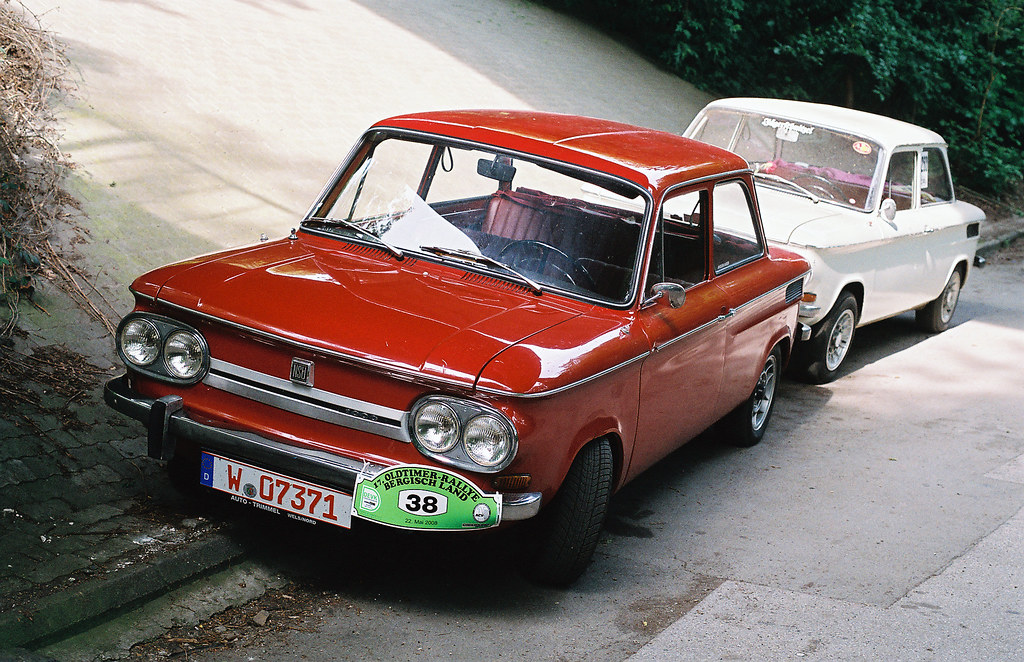
Well, folks, let me tell you something about the cars we used to drool over back in the ’60s. That magnificent decade wasn’t just a time of societal shifts and evolving music; it was a bona fide golden age for the automobile. From the sleekest European sports cars to the roaring beasts of American muscle, the 1960s unleashed a torrent of innovation, audacity, and sheer, unadulterated automotive passion that still revs our engines today.
These beautiful machines weren’t just transportation; they were rolling works of art, engineering marvels, and often, a vibrant statement of freedom and style. They pushed boundaries, broke records, and left an indelible mark on enthusiasts and collectors alike. Imagine the thrill of seeing one of these beauties for the first time, a vision of speed and elegance poised to conquer the road.
Today, many of these very vehicles are fetching prices that would make your eyes pop right out of your head, transforming from showroom dreams into retirement-fund fantasies. So, buckle up, because we’re about to take a high-octane cruise down memory lane. We’re going to explore some of the absolute masterpieces that emerged from this transformative decade, cars that continue to capture imaginations and dominate auctions, proving their timeless appeal.
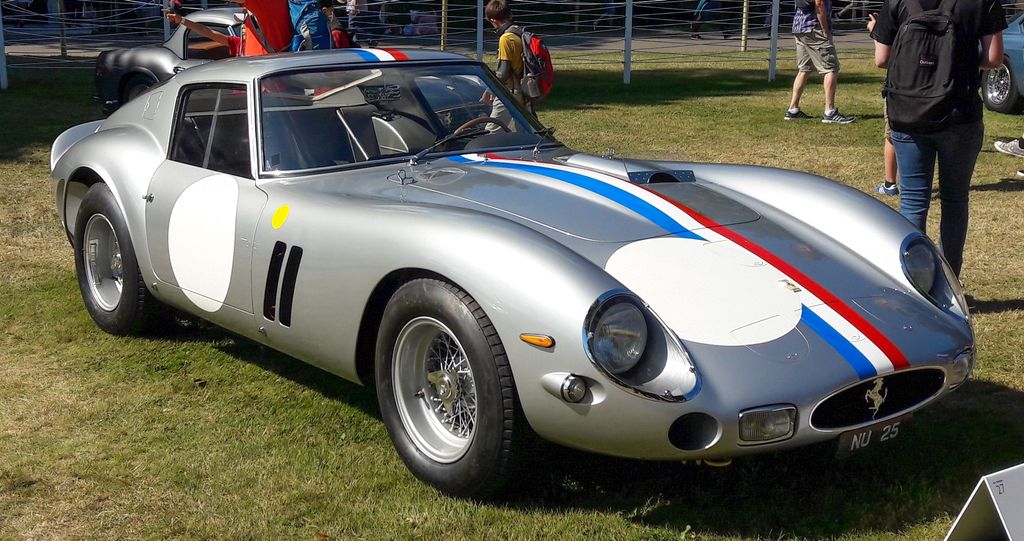
1. **1963 Ferrari 250 GTO**Ah, the 1963 Ferrari 250 GTO – the name alone sends shivers down the spine of any true petrolhead. This isn’t just a car; it’s the crown jewel of classic cars, the holy grail for collectors, and arguably the most desirable machine ever to grace tarmac. It’s the kind of vehicle that transcends mere transportation, embodying the very essence of automotive artistry and racing pedigree.
Only 36 of these magnificent beasts were ever made, a number that sounds almost sacrilegious given its legendary status. This extreme rarity, combined with its unparalleled racing history and breathtaking Pininfarina-designed bodywork, means that today, these automotive titans command prices upward of $70 million. Yes, you read that right – seventy million dollars! It’s an almost unimaginable sum, a testament to its singular place in history.
Back in 1963, if you were fortunate enough, you could have driven one off the lot for about $18,000. While that was a princely sum then, just imagine the return on investment for those prescient few who recognized its future legend. The 250 GTO wasn’t just a car; it was a statement of speed, power, and exclusivity, an Italian masterpiece representing the absolute peak of Ferrari’s golden age, dominating racetracks and captivating onlookers with its undeniable presence.
Car Model Information: 2024 Volkswagen Tiguan 2.0T Wolfsburg Edition
Name: Ferrari 250 GTO
Caption: 1963 Ferrari 250 GTO (chassis 4153GT)
Manufacturer: Ferrari
Production: 1962–1964,(36 produced)
Designer: Giotto Bizzarrini,Scaglietti
Class: Sports car
BodyStyle: berlinetta
Related: Ferrari 330#330 LMB,Ferrari P#250 LM
Layout: FR layout
Engine: 2,953 cc,Ferrari Colombo engine#250,Overhead camshaft#Single Overhead camshatf,Weber carburetor,Compression ratio
Powerout: 300 PS
Abbr: on
Order: flip @ 5500 rpm
Transmission: Manual transmission
Wheelbase: 2400 mm
Length: 4325 mm
Width: 1600 mm
Height: 1210 mm
Weight: convert
Predecessor: Ferrari 250 GT SWB
Successor: Ferrari 250 LM,Ferrari 288 GTO
Categories: All articles lacking reliable references, All articles needing additional references, All articles with bare URLs for citations, All articles with unsourced statements, Articles lacking reliable references from March 2022
Summary: The Ferrari 250 GTO is a grand tourer produced by Ferrari from 1962 to 1964 for homologation into the FIA’s Group 3 Grand Touring Car category. It was powered by Ferrari’s Tipo 168/62 Colombo V12 engine. The “250” in its name denotes the displacement in cubic centimeters of each of its cylinders; “GTO” stands for Gran Turismo Omologato, Italian for “Grand Touring Homologated”.
Just 36 of the 250 GTOs were manufactured between 1962 and 1964. This includes 33 cars with 1962–63 bodywork (Series I) and three with 1964 (Series II) bodywork similar to the Ferrari 250 LM. Four of the older 1962–1963 (Series I) cars were updated in 1964 with Series II bodies.
When new, the 250 GTO cost $18,000 in the United States, with buyers personally approved by Enzo Ferrari and his dealer for North America, Luigi Chinetti. This model has since become highly desired by automobile collectors and sales have repeatedly set price records. The current record for world’s most expensive Ferrari was set in June 2018 when a 1963 250 GTO (chassis 4153GT) was sold in a private sale for $70 million.
In 2004, Sports Car International placed the 250 GTO eighth on their list of Top Sports Cars of the 1960s, and nominated it the top sports car of all time. Similarly, Motor Trend Classic placed the 250 GTO first on a list of the “Greatest Ferraris of All Time”. Popular Mechanics named it the “Hottest Car of All Time”.
Get more information about: Ferrari 250 GTO
Buying a high-performing used car >>>
Brand: Ferrari Model: 250 GTO
Price: $28,928 Mileage: 18,114 mi.
Read more about: The Untamed Roads: Iconic Machines That Defined the 60s and 70s Automotive Golden Era
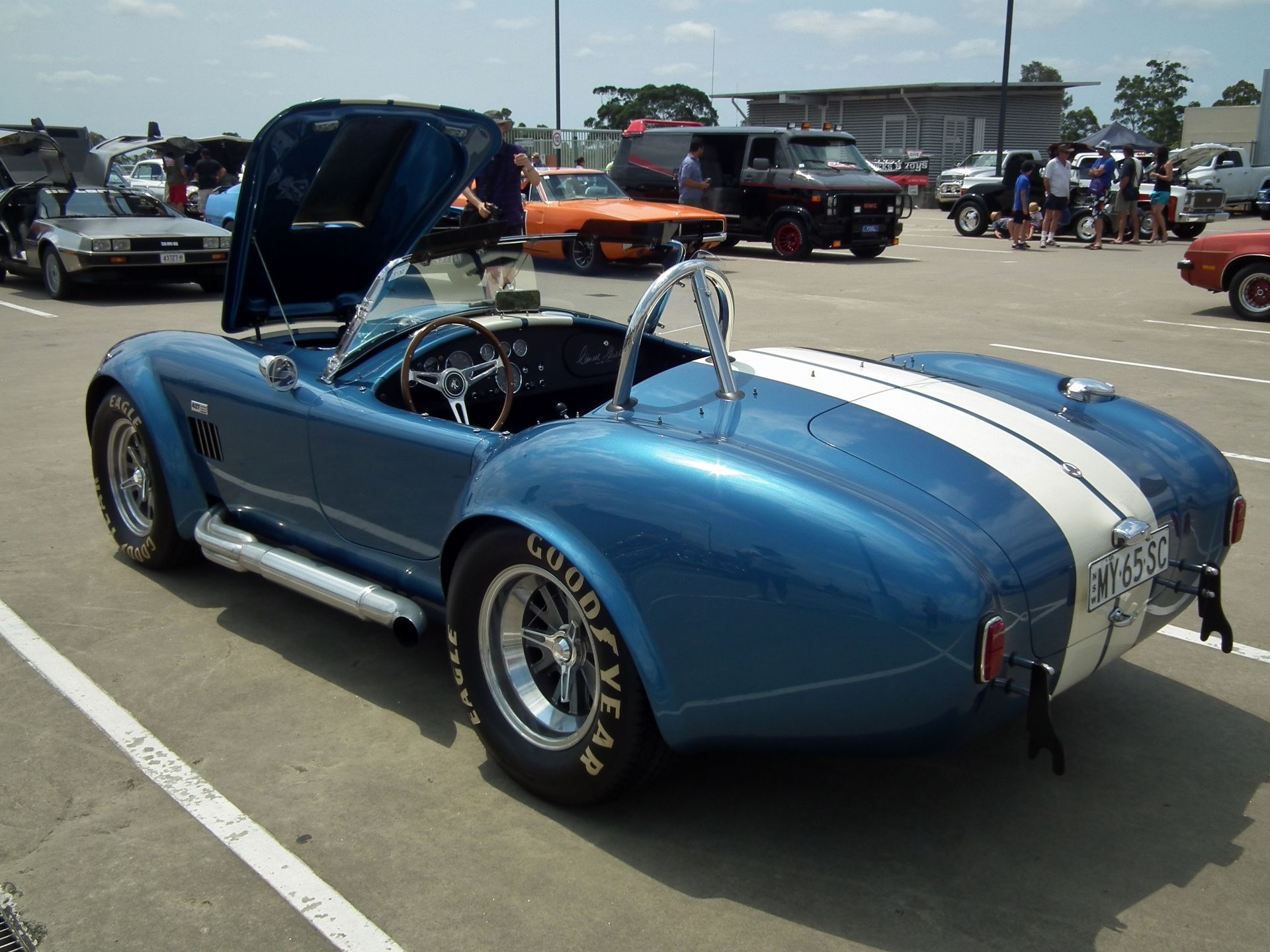
2. **1965 Shelby Cobra 427**Next up, we have Carroll Shelby’s thunderous masterpiece: the 1965 Shelby Cobra 427. This American icon is a pure, unadulterated concoction of British elegance fused with brute American muscle. It’s the automotive equivalent of a finely tailored suit with a heavyweight boxer lurking underneath – utterly gorgeous and devastatingly powerful.
Shelby took a lightweight AC Ace roadster body and shoehorned in a monstrous Ford V8 engine, creating a performance powerhouse that redefined what a sports car could be. The 427 variant, introduced in 1965, is without doubt the most famous and desirable of all Cobras. Its wide fenders, aggressive stance, and that unmistakable roar make it a truly visceral experience.
Original 427 Cobras are not just cars; they are legends. They fetch anywhere from $1.5 to $5.5 million at auction, and honestly, every penny is worth it for a slice of this automotive history. With its thunderous V8 engine and timeless design, it’s no wonder these cars continue to capture imaginations and wallets alike, proving that raw power and stunning looks are a truly irresistible combination. There was even a Super Snake version, practically a racecar modified for the street, boasting twin Paxton superchargers doubling its output from 427 to an astonishing 800 horsepower, making it one of the rarest and most potent American muscle cars ever built.
Car Model Information: 2023 Kia Telluride SX
Caption: AC Cobra 427
Layout: front-engine, rear-wheel drive layout
Manufacturer: AC Cars,Shelby American
Production: 1965–1967
Name: MkIII
Aka: AC Shelby Cobra , Shelby AC Cobra
BodyStyle: Roadster (automobile)
Assembly: Thames Ditton,Surrey,England
Predecessor: AC Ace
Class: Sports car
Successor: AC MK IV
Related: AC Frua,Shelby Daytona
Engine: convert,V8 engine
Wheelbase: 90 in
Abbr: on
Order: flip
Length: 156 in
Width: 68 in
Height: 48 in
Weight: 2355 lb
Categories: 1960s cars, AC vehicles, All articles with unsourced statements, Articles with short description, Articles with unsourced statements from December 2014
Summary: The AC Cobra, sold in the United States as the Shelby Cobra and AC Shelby Cobra, is a sports car manufactured by British company AC Cars, with a Ford V8 engine. It was produced intermittently in both the United Kingdom and later the United States since 1962.
Get more information about: AC Cobra
Buying a high-performing used car >>>
Brand: Shelby Model: Cobra 427
Price: $36,155 Mileage: 28,718 mi.
Read more about: Cruising Through Time: The 12 Dream Machines of the 1960s and 1970s That Defined Automotive Greatness
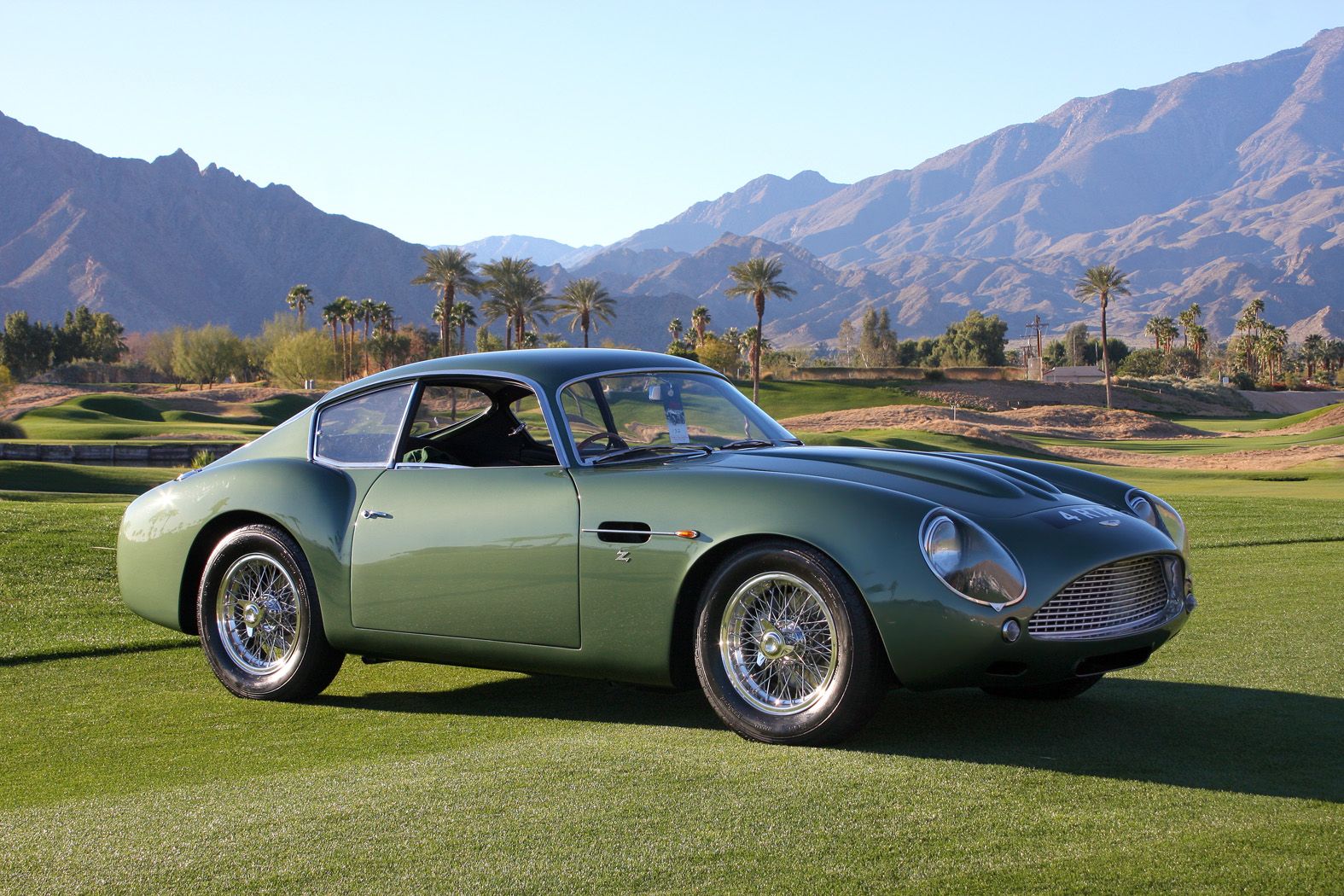
3. **1961 Aston Martin DB4 GT Zagato**If you’re searching for the pinnacle of automotive elegance, then look no further than the 1961 Aston Martin DB4 GT Zagato. This exquisite British-Italian collaboration is a true work of art, a symphony of engineering prowess from Aston Martin and the breathtaking, lightweight bodywork crafted by the masterful coachbuilders at Zagato. It’s a car that stops you in your tracks, demanding admiration from every angle.
With only 19 units ever produced, this is a machine of almost mythical rarity. Each one was a bespoke creation, designed for discerning gentlemen racers who appreciated both blistering performance and exquisite style. The streamlined, hand-formed aluminum body, lighter and more aerodynamic than the standard DB4 GT, hints at its racing intentions while exuding an effortless sophistication.
Recent sales figures for this automotive unicorn have topped an eye-watering $13 million, solidifying its position among the most valuable and coveted classic cars in the world. The harmonious blend of Aston Martin’s robust engineering and Zagato’s sensuous, flowing lines created what many consider the most beautiful car ever made. It’s a testament to a bygone era when craftsmanship and passion knew no bounds, resulting in a machine that is as exhilarating to behold as it is to drive.
Car Model Information: 2023 Kia Telluride SX
Name: Aston Martin DB4 GT Zagato
Manufacturer: Aston Martin
Production: 1960–1963,(25 produced, inc 4 Sanction II and 2 Sanction III)
Class: Grand tourer
BodyStyle: Coupe
Engine: straight-6
Transmission: 4-speed manual
Wheelbase: 2362 mm
Abbr: on
Length: 4267 mm
Width: 1557 mm
Height: 1270 mm
Weight: 1225 kg
Successor: Aston Martin V8 Zagato
Related: Aston Martin DB4
Designer: Ercole Spada
Sp: uk
Categories: All articles needing additional references, All articles with unsourced statements, Articles needing additional references from April 2018, Articles needing additional references from July 2025, Articles with short description
Summary: The Aston Martin DB4 GT Zagato is a grand tourer sports car designed by Zagato and produced between 1960 and 1963. Introduced in October 1960 at the London Motor Show, it was effectively a DB4 GT, lightened and improved by the Zagato factory in Italy, by Ercole Spada. Initially, the factory planned to produce 25 cars, but demand was not as strong as expected and production was reduced to 19.
Growing popularity of the original DB4 GT Zagato resulted in two subsequent waves of cars based on DB4s being rendered into “Zagatos” through the cooperation of Aston Martin and the Zagato works in Italy. They are known as “Sanction II” and “Sanction III” cars. Also, an unauthorised industry of modifying original DB4 GTs into “Zagato” replicas has arisen.
Get more information about: Aston Martin DB4 GT Zagato
Buying a high-performing used car >>>
Brand: Aston Martin Model: DB4 GT Zagato
Price: $36,155 Mileage: 28,718 mi.
Read more about: Revving Through History: Uncovering the World’s Most Expensive Cars of the 1960s, a MotorTrend Deep Dive
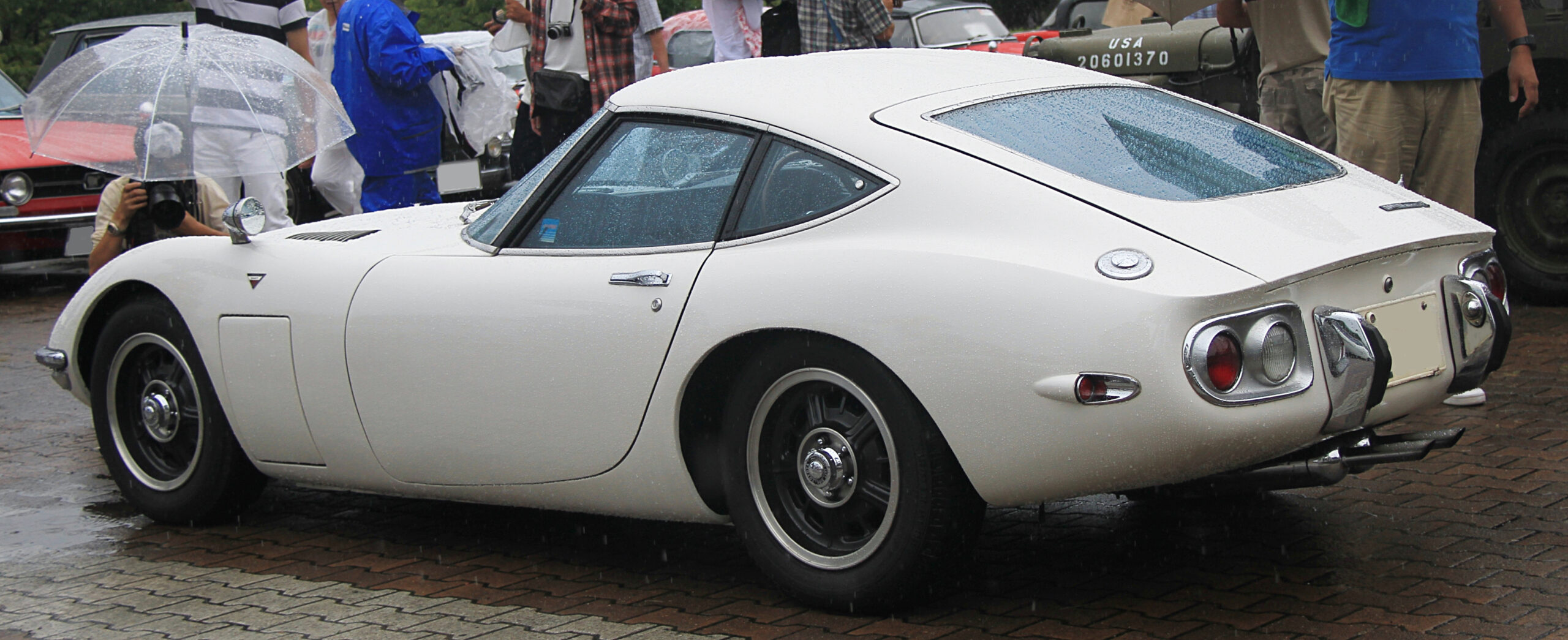
4. **1967 Toyota 2000GT**Prepare for a revelation: the 1967 Toyota 2000GT is not just a car, it’s a statement. This extraordinary machine showed the world that Japan could build more than just practical family cars; it could craft a supercar that rivaled the best from Europe. It shattered preconceived notions and paved the way for Japan’s future as a global automotive powerhouse.
Originally revealed to the public at the 1965 Toyota Motor Show and manufactured between 1967 and 1970, the 2000GT was a front-engine, limited-edition, two-seat hardtop, a collaboration between Toyota and Yamaha. Its beautiful design, with its long bonnet, pop-up headlights, and graceful curves, quickly earned it a reputation as Japan’s first supercar, often drawing comparisons to the legendary Porsche 911.
With only 351 units ever made, the 2000GT is a genuine rarity. Today, these beauties command prices well over $1 million, a phenomenal testament to their enduring appeal and historical significance. Who would’ve thought back then that a Japanese car would become one of the most sought-after classics in the world? Its fame was further boosted by its appearance in the James Bond film ‘You Only Live Twice,’ cementing its place in popular culture as a true cinematic and automotive icon.
Read more about: The Ones That Got Away: Classic Rides Car Enthusiasts Seriously Regret Selling
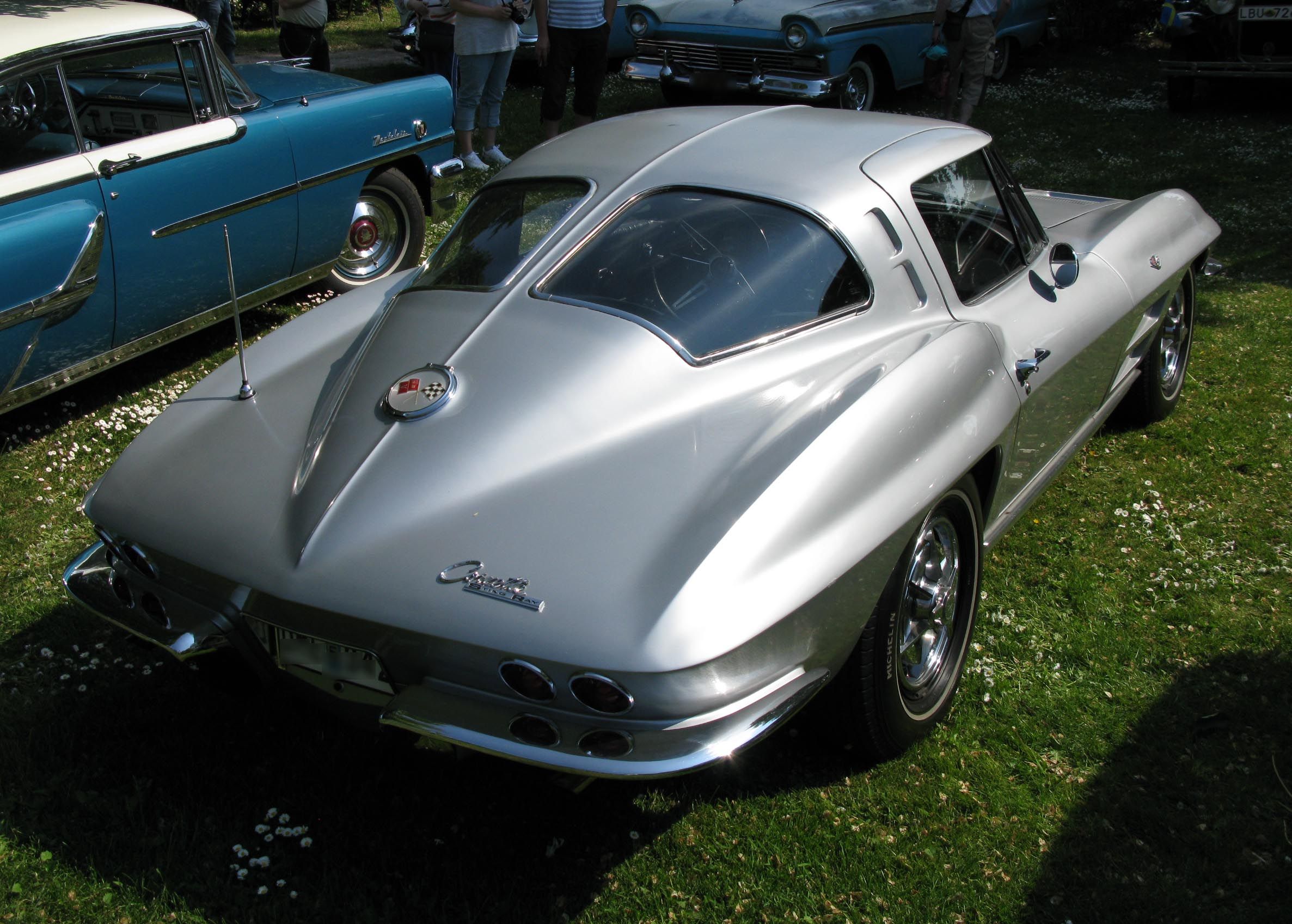
5. **1963 Chevrolet Corvette Split-Window**The 1963 Chevrolet Corvette Split-Window isn’t just a car; it’s an American legend, a design anomaly, and an instant classic. This particular model year, the first production Corvette coupe ever offered, holds a special place in history due to its distinctive, one-year-only split-window design in the rear. It was a bold aesthetic choice that, while controversial at the time, has since become one of the most iconic styling elements in automotive history.
This C2 generation Sting Ray marked a significant leap forward for the Corvette. Not only did it introduce the split rear window and the debut of hideaway headlights, but it was also the first Corvette to feature an independent rear suspension, a technological marvel that drastically improved its handling. Its aggressive stance, sleek lines, and powerful V8 engine immediately solidified its status as a quintessential American sports car.
With over 20,000 units built in 1963, doubling the production from the year prior, the Sting Ray found a broad audience who appreciated its unique blend of performance, style, and affordability. Today, that distinctive split-window design makes this Corvette especially valuable, with pristine examples selling for over $500,000. It’s a legend in the automotive world, a testament to American ingenuity and a design masterpiece that remains instantly recognizable and deeply coveted.
Car Model Information: 2004 Chevrolet Corvette Base
Name: Chevrolet Corvette
Caption: 2021 Chevrolet Corvette C8
Manufacturer: Chevrolet
Production: 1953–present
ModelYears: bulleted list
Assembly: bulleted list
Class: Sports car
BodyStyle: coupé
Layout: Front-engine, rear-wheel-drive layout,Rear mid-engine, rear-wheel-drive layout
Categories: 1950s cars, 1960s cars, 1970s cars, 1980s cars, 1990s cars
Summary: The Chevrolet Corvette is a line of American two-door, two-seater sports cars manufactured and marketed by General Motors under the Chevrolet marque since 1953. Throughout eight generations, indicated sequentially as C1 to C8, the Corvette is noted for its performance, distinctive styling, lightweight fiberglass or composite bodywork, and competitive pricing. The Corvette has had domestic mass-produced two-seater competitors fielded by American Motors, Ford, and Chrysler; it is the only one continuously produced by a United States auto manufacturer. It serves as Chevrolet’s halo car.
In 1953, GM executives accepted a suggestion by Myron Scott, then the assistant director of the Public Relations department, to name the company’s new sports car after the corvette, a small, maneuverable warship. Initially, a relatively modest, lightweight 6‑cylinder convertible, subsequent introductions of V8 engines, competitive chassis innovations, and rear mid-engined layout have gradually moved the Corvette upmarket into the supercar class. In 1963, the second generation was introduced in coupe and convertible styles. The first three Corvette generations (1953–1982) employed body-on-frame construction, and since the C4 generation, introduced in 1983 as an early 1984 model, Corvettes have used GM’s unibody Y‑body platform. All Corvettes used front mid-engine configuration for seven generations, through 2019, and transitioned to a rear mid-engined layout with the C8 generation.
Initially manufactured in Flint, Michigan, and St. Louis, Missouri, the Corvette has been produced in Bowling Green, Kentucky, since 1981, which is also the location of the National Corvette Museum. The Corvette has become widely known as “America’s Sports Car.” Automotive News wrote that after being featured in the early 1960s television show Route 66, “the Corvette became synonymous with freedom and adventure,” ultimately becoming both “the most successful concept car in history and the most popular sports car in history.”
Get more information about: Chevrolet Corvette
Buying a high-performing used car >>>
Brand: Chevrolet Model: Corvette
Price: $22,993 Mileage: 29,579 mi.
Read more about: Behind the Melodies and Magnificence: An Enthusiastic Look at Brian Wilson’s Legendary Car Collection and His Unforgettable Automotive Legacy

6. **1966 Lamborghini Miura**And then there was the 1966 Lamborghini Miura – a car that didn’t just break the mold, it obliterated it. Many historians agree that the Miura was the car that truly put Lamborghini on the map, not just as a competitor to Ferrari, but as a pioneer in its own right. It’s widely considered the world’s first mid-engine exotic sports car, setting the template for every supercar that followed.
Conceived by brilliant Lamborghini engineers in their free time, the Miura was first shown to a stunned world at the 1966 Geneva Auto Show. Its mid-engine layout, sensuous body penned by Marcello Gandini at Bertone, and that aggressive, ‘fighting bull’ logo made it an instant sensation. Nothing else looked quite like it when it debuted, and honestly, some would argue nothing has looked quite as good since. It was a revolution on wheels, a breathtaking vision of speed and elegance.
Powering this mechanical masterpiece was a formidable 3.9-liter, 350-horsepower V12 engine, capable of pushing the car to speeds over 170 mph, making it one of the fastest cars of its era. These mechanical masterpieces now command prices well over $2 million, a testament to their groundbreaking design, blistering performance, and enduring legend. Although it had a relatively short production run, manufactured only between 1966 and 1973, the Miura’s impact on automotive design and performance is simply immeasurable.
Read more about: Buckle Up, Buttercup! These 15 Iconic Rides Totally Defined the ’70s – Did YOU Cruise in Any of Them?
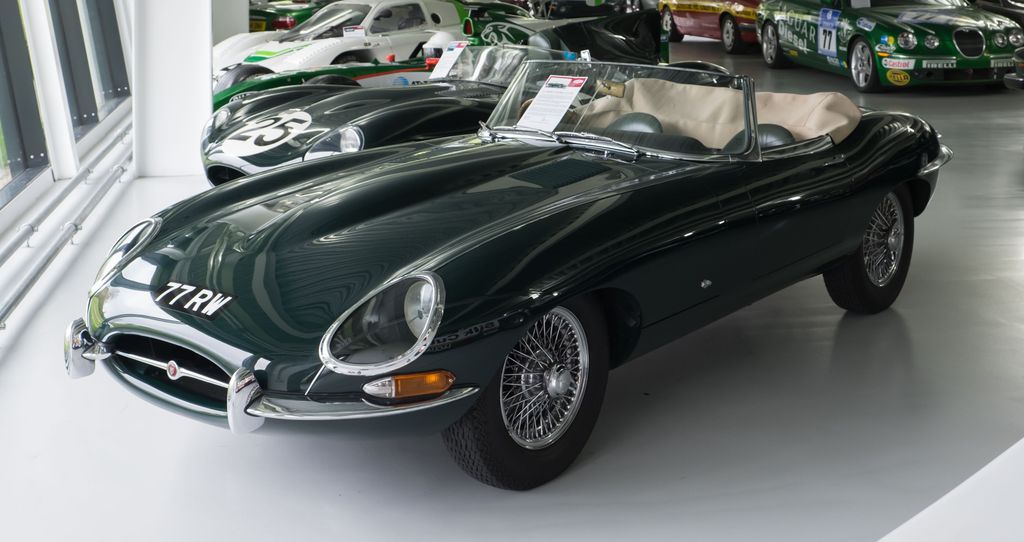
7. **1961 Jaguar E-Type**Let’s talk about beauty, sheer, unadulterated automotive beauty. The 1961 Jaguar E-Type is often hailed as one of the most beautiful cars ever made, a sentiment famously echoed by Enzo Ferrari himself, who proclaimed it “the most beautiful car ever made.” And honestly, who are we to argue? The market certainly doesn’t, with early Series 1 examples fetching over $300,000 today.
Launched in 1961, its flowing lines, long, purposeful bonnet, and distinctive headlamps captured the imagination of car lovers worldwide. The E-Type wasn’t just a pretty face; it was an instant hit due to its formidable performance. With a 150mph top speed and a sub-7 second 0-60mph time, it was one of the fastest cars of its era, making it the definitive sports car of the 1960s.
This car is so special that it’s one of only six vehicle models on display at the New York City Museum of Modern Art – a true testament to its artistic and engineering significance. Beyond its stunning aesthetics, the E-Type was a masterpiece of engineering, featuring monocoque construction, disc brakes all around, and independent front and rear suspension. Powered by a 268 horsepower 3.8-liter six-cylinder engine, it offered a sublime combination of performance, groundbreaking technology, and captivating beauty that continues to enchant enthusiasts more than half a century later.
Now, let’s fire up the second half of our engine and dive into more of these glorious machines that defined a decade! We’ve seen some utterly breathtaking examples, but believe me, the well of 1960s automotive genius runs incredibly deep. So, buckle up once more, because we’re about to unveil another seven titans that roared their way into legend, showcasing raw power, undeniable luxury, and cultural impact that truly cemented their place in history.
Car Model Information: 1962 Jaguar E-Type XKE
Sp: uk
Name: Jaguar E-Type
Caption: 1961 E-Type Series 1 3.8-Litre, the first production model of this open two-seater
Aka: Jaguar XK-E , Jaguar V-12
Manufacturer: Jaguar Cars
Production: 1961–1974
Class: Sports car
Predecessor: Jaguar XK150
Related: Jaguar D-Type,Jaguar XJ13
Successor: Jaguar XJS
Layout: FMR layout
Assembly: Coventry,England
Designer: Malcolm Sayer
Categories: 1970s cars, 2+2 coupés, All articles with dead external links, All articles with specifically marked weasel-worded phrases, All articles with unsourced statements
Summary: The Jaguar E-Type, or the Jaguar XK-E for the North American market, is a British front mid-engined sports car that was manufactured by Jaguar Cars Ltd from 1961 to 1974. Its sleek appearance, advanced technologies, high performance, and competitive pricing established it as an icon. The E-Type’s claimed 150 miles per hour (240 km/h) top speed, sub-7-second 0 to 60 mph (97 km/h) acceleration, largely unitary body construction, front and rear independent suspension with disc brakes, mounted inboard at the rear, and rack-and-pinion steering spurred industry-wide changes.
The E-Type was based on Jaguar’s D-Type racing car, which had won the 24 Hours of Le Mans for three consecutive years beginning in 1955.
The E-Type employed what was, for the early 1960s, a novel design principle, with a front subframe carrying the engine, front suspension and front bodywork bolted directly to the body tub. No ladder frame chassis, as was common at the time, was needed and as such the first cars weighed only 1,315 kg (2,899 lb).
It is rumored that, on its debut on 15 March 1961, Enzo Ferrari called it “the most beautiful car ever made”, but this statement is not fully confirmed. In 2004, Sports Car International magazine placed the E-Type at number one on their list of Top Sports Cars of the 1960s. In March 2008, the Jaguar E-Type ranked first in The Daily Telegraph’s online list of the world’s “100 most beautiful cars” of all time.
Get more information about: Jaguar E-Type
Buying a high-performing used car >>>
Brand: Jaguar Model: E-Type
Price: $269,900 Mileage: 76,725 mi.
Read more about: The Untamed Roads: Iconic Machines That Defined the 60s and 70s Automotive Golden Era
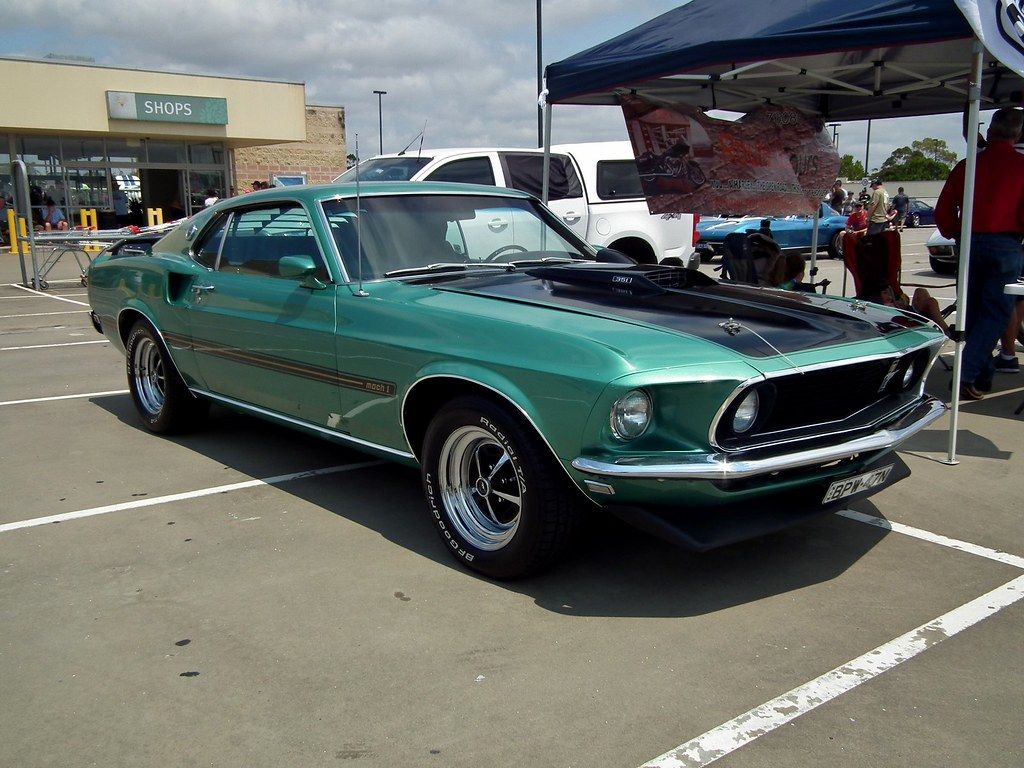
8. **1969 Boss 429 Mustang**Oh, the 1969 Boss 429 Mustang! This isn’t just a Mustang; it’s a four-wheeled declaration of war, built for one glorious purpose: to dominate NASCAR. Ford unleashed this beast not merely as a car, but as a homologation special, a street-legal requirement to qualify its monstrous 429 cubic inch engine for the high-banked ovals. It’s a purebred racer wearing a road car disguise, and its rarity speaks volumes about its special purpose.
Imagine trying to shoehorn a V8 engine of such colossal proportions into a Mustang’s engine bay. It was a Herculean task, pushing the boundaries of what was thought possible for a production car. The result was a phenomenal machine, a raw, uncompromising brute that left no doubt about its intentions. It was built for speed, for power, and for pure, unadulterated American muscle car glory.
These muscle car icons are, quite frankly, as rare as hen’s teeth today, and finding a pristine example will set you back a pretty penny, regularly selling for over $400,000. That massive engine might have barely fit under the hood, but boy, was it worth the squeeze! It’s a testament to an era when manufacturers built cars to win on Sunday and sell on Monday, leaving us with utterly legendary machines like the Boss 429.
Car Model Information: 2024 Ford Mustang GT
Name: Ford Mustang
Caption: 2018 Ford Mustang GT 5.0
Aka: Ford T5 (Germany)
Manufacturer: Ford Motor Company
Production: March 1964 – present
ModelYears: 1965–present
Class: Unbulleted list
BodyStyle: Unbulleted list
Layout: Front-engine, rear-wheel-drive layout
Categories: 1970s cars, 1980s cars, 1990s cars, 2+2 coupés, 2000s cars
Summary: The Ford Mustang is a series of American automobiles manufactured by Ford. In continuous production since 1964, the Mustang is currently the longest-produced Ford car nameplate. Currently in its seventh generation, it is the fifth-best selling Ford car nameplate. The namesake of the “pony car” automobile segment, the Mustang was developed as a highly styled line of sporty coupes and convertibles derived from existing model lines, initially distinguished by “long hood, short deck” proportions.
Originally predicted to sell 100,000 vehicles yearly, the 1965 Mustang became the most successful vehicle launch since the 1927 Model A. Introduced on April 17, 1964 (16 days after the Plymouth Barracuda), over 400,000 units were sold in its first year; the one-millionth Mustang was sold within two years of its launch. In August 2018, Ford produced the 10-millionth Mustang; matching the first 1965 Mustang, the vehicle was a 2019 Wimbledon White convertible with a V8 engine.
The success of the Mustang launch led to multiple competitors from other American manufacturers, including the Chevrolet Camaro and Pontiac Firebird (1967), AMC Javelin (1968), and Dodge Challenger (1970). It also competed with the Plymouth Barracuda, which was launched around the same time. The Mustang also had an effect on designs of coupes worldwide, leading to the marketing of the Toyota Celica and Ford Capri in the United States (the latter, by Lincoln-Mercury). The Mercury Cougar was launched in 1967 as a unique-bodied higher-trim alternative to the Mustang; during the 1970s, it included more features and was marketed as a personal luxury car.
From 1965 until 2004, the Mustang shared chassis commonality with other Ford model lines, staying rear-wheel-drive throughout its production. From 1965 to 1973, the Mustang was derived from the 1960 Ford Falcon compact. From 1974 until 1978, the Mustang (denoted Mustang II) was a longer-wheelbase version of the Ford Pinto. From 1979 until 2004, the Mustang shared its Fox platform chassis with 14 other Ford vehicles (becoming the final one to use the Fox architecture). Since 2005, Ford has produced two generations of the Mustang, each using a distinct platform unique to the model line.
Through its production, multiple nameplates have been associated with the Ford Mustang series, including GT, Mach 1, Boss 302/429, Cobra (separate from Shelby Cobra), and Bullitt, along with “5.0” fender badging (denoting 4.9 L OHV or 5.0 L DOHC V8 engines).
Get more information about: Ford Mustang
Buying a high-performing used car >>>
Brand: Ford Model: Mustang
Price: $37,565 Mileage: 37,293 mi.
Read more about: Roaring Legends: A Deep Dive into 15 Peak-Performance 1970s Muscle Cars for the Enthusiast
9. **1960 Porsche 718 RS 60 Spyder**From the visceral thunder of American muscle, we gracefully pirouette to a different kind of automotive artistry: the 1960 Porsche 718 RS 60 Spyder. This isn’t a cruiser for the boulevard; this is a scalpel-sharp, pure racing machine, a true testament to Porsche’s relentless pursuit of perfection in motorsport. It dominated hill climbs and road races with an almost surgical precision, embodying the very essence of Porsche’s golden age of motorsport.
Only 19 of these incredible machines were ever built, each one a feather-light, mid-engined marvel designed to carve corners and break records. They were driven by legends, pushing the limits of what a lightweight sports car could achieve. Its open-top design wasn’t just for flair; it was part of the minimalist, performance-driven philosophy that made these cars so incredibly effective on the track.
Today, these rare gems aren’t just cars; they’re pieces of history, mechanical artifacts that tell tales of daring drivers and thrilling victories. They command prices well over $5 million at auction, and honestly, every single dollar is justified for a slice of that pure, unadulterated racing spirit. Each of the 19 units has a rich, storied racing history, making them truly priceless.
Car Model Information: 2024 Honda Civic LX
CarName: Porsche 718
Category: Sportscar, F1, F2
Constructor: Porsche
Designer: [object Object]
Team: Porsche in motorsport
Drivers: Graham Hill,Stirling Moss,Wolfgang von Trips,Edgar Barth,Carel Godin de Beaufort,Joakim Bonnier,Dan Gurney,Hans Herrmann,Nino Vaccarella,Gerhard Mitter
Chassis: Spaceframe chassis
FrontSuspension: torsion bars, telescopic shock absorbers, anti-roll bar
RearSuspension: Watt-linkage, coil springs over telescopic shock absorbers
EngineName: Type 547
Capacity: cvt
Configuration: Overhead camshaft#Dual overhead camshaft,Flat-four engine,Flat engine#Boxer engine
EnginePosition: Mid-engine design
Gears: 5-speed
Type: Manual transmission
Weight: cvt
Fuel: Gasoline
Predecessor: Porsche 550
Debut: 1957 24 Hours of Le Mans
Races: 28 (F1)
Wins: 0 (F1),3 (Targa Florio), 1 (12 Hrs of Sebring)
ConsChamp: 0
DriversChamp: 5 (European Hill Climb)
TeamsChamp: 0
Poles: 0
FastestLaps: 0
Categories: 1958 Formula One season cars, 1959 Formula One season cars, 1960 Formula One season cars, 1961 Formula One season cars, 1962 Formula One season cars
Summary: The Porsche 718 is a series of one- or two-seat sports-racing cars built by Porsche from 1957 to 1962. An open-wheel single-seat model was developed for Formula racing.
Get more information about: Porsche 718
Buying a high-performing used car >>>
Brand: Porsche Model: 718 RS 60 Spyder
Price: $21,650 Mileage: 17,979 mi.
Read more about: Lady Gaga’s Epic Garage Unveiled: A High-Octane Tour Through Her Wildly Diverse and Captivating Car Collection
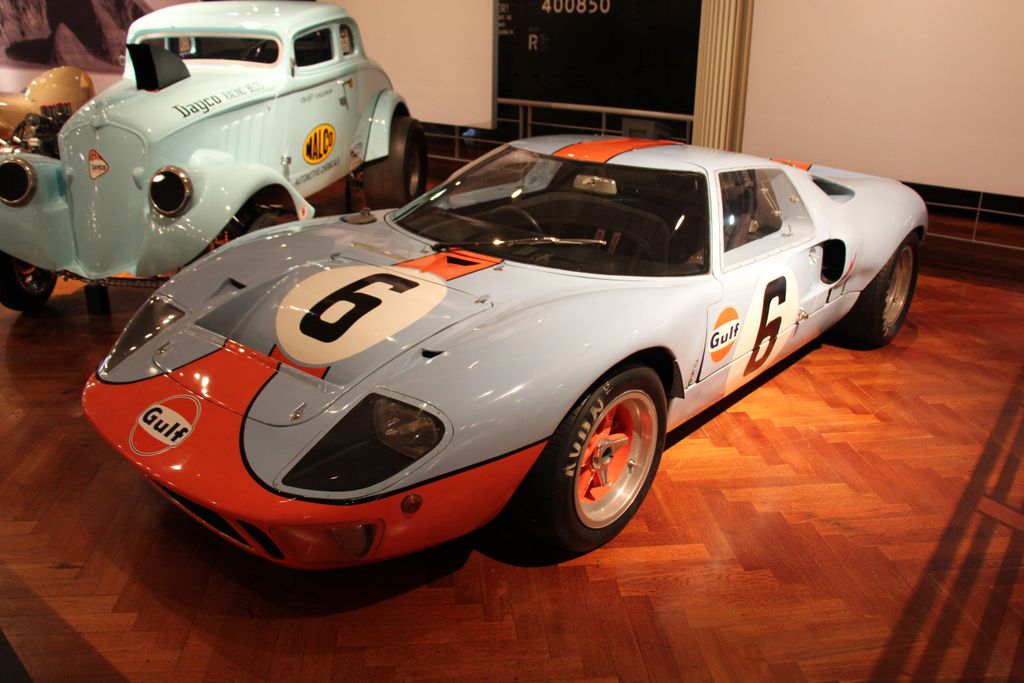
10. **1968 Ford GT40**Now, prepare yourselves for a tale of vengeance, of sheer, bloody-minded determination forged in the fires of rivalry: the 1968 Ford GT40. This is the car that didn’t just compete; it utterly dominated. This is the machine that famously beat Ferrari at Le Mans not once, not twice, but four glorious years in a row, from 1966 to 1969. It is, without question, American ingenuity at its absolute finest, a four-wheeled middle finger to the old guard.
The story behind the GT40 is as legendary as the car itself. Built out of spite when Enzo Ferrari famously spurned Ford’s buyout offer, Henry Ford II gave his engineers a simple, unambiguous directive: build a car to beat Ferrari at their own game. And boy, did they deliver! The low-slung, aerodynamically perfect body, combined with roaring American V8 power, created an unbeatable package.
Today, an original example of this Le Mans conqueror is more than a car; it’s a monument. It has rightfully fetched prices north of $11 million at auction, a figure that only begins to scratch the surface of its historical and emotional value. The GT40 isn’t just a car; it’s a saga, a triumph, and one of the most successful racing cars ever conceived, a true automotive legend.
Car Model Information: 1966 Ford GT40
Name: Ford GT40
Caption: Ford GT40 Mk.I in JWA Gulf Oil racing colors
Manufacturer: Ford Advanced Vehicles,John Wyer,Kar Kraft,Holman-Moody,Shelby American
Production: 1964–1969
Assembly: Slough,Los Angeles
Designer: Ron Bradshaw
Class: Group 4 (racing),Group 5 (racing),Group 6 (racing)
BodyStyle: coupé
Layout: MR layout
Engine: Cubic inch,289 CID (4737 cc) V-8,302 CID (4942 cc) V-8,427 CID (6997 cc) V-8
Transmission: Manual transmission
Wheelbase: 95 in
Abbr: on
Length: 160 in
Width: 70 in
Height: 40.5 in
Weight: convert
Successor: Ford P68
Sp: uk
Categories: 24 Hours of Le Mans race cars, All Wikipedia articles needing clarification, All articles needing additional references, All articles that may contain original research, All articles with specifically marked weasel-worded phrases
Summary: The Ford GT40 is a high-performance mid-engined racing car originally designed and built for and by the Ford Motor Company to compete in 1960s European endurance racing and the World Sportscar Championship. Its specific impetus was to beat Scuderia Ferrari, which had won the prestigious 24 Hours of Le Mans race for six years running from 1960 to 1965. As rules of the time required that GT cars were built in dozens and sold, around 100 cars in total have been made, mostly as 289 cu in (4.7 L) V8-powered Mk Is, of which at least 50 were made in 1965, which allowed FIA-homologation as Group-4-Sportscar for 1966 until 1971. This gave the old MK.I car of Gulf-Wyer the chance to enter and win Le Mans in 1968 and 1969 after prototypes had been limited to 3 litre, with the performance of the Ford 7-litre-V8 in the factory 1966 Mk.II and 1967 Mk.IV prototypes causing this rule change, which also banned the 4-litre V12 Ferrari 330P4 and others after 1967. The Mk.III designation was used for some road-legal cars.
The Ford GT40 debuted in 1964, and improvements in 1965 led to Ford winning World Championships categories from 1966 to 1968. The first Le Mans win came in 1966 with three 427 cu in (7.0 L) powered Mk.II prototypes crossing the finish line together, the second in 1967 with the same engine now in quite different US-built Mk.IV prototype chassis similar to the “J-car” mule. In order to lower ever-higher race top speeds, a rule change from 1968 onwards limited prototypes to 3.0 litre Formula 1 engines; the sportscar “loophole”, however, allowed the private JW “Gulf Oil” team to win at Le Mans in 1968 and 1969 running a Mk.I with a 5.0 litre engine.
The GT40 effort began in Britain in the early 1960s when Ford Advanced Vehicles began to build the Mk I, based upon the British Lola Mk6, in Slough, UK. After disappointing race results, the engineering team was moved in 1964 to Dearborn, Michigan, US, to design and build cars by its advanced developer, Kar Kraft. All chassis versions were powered by a series of American-built Ford V8 OHV engines modified for racing.
In the 1966 Le Mans, the GT40 Mk II car broke Ferrari’s winning streak, making Ford the first American manufacturer to win a major European race since Jimmy Murphy’s Duesenberg in the 1921 French Grand Prix. In the 1967 Le Mans, the GT40 Mk IV car became the only car developed and assembled entirely (both chassis and engine) in the United States to achieve the overall win at Le Mans.
Get more information about: Ford GT40
Buying a high-performing used car >>>
Brand: Ford Model: GT40
Price: $110,000 Mileage: 13,350 mi.
Read more about: The Ones That Got Away: Classic Rides Car Enthusiasts Seriously Regret Selling
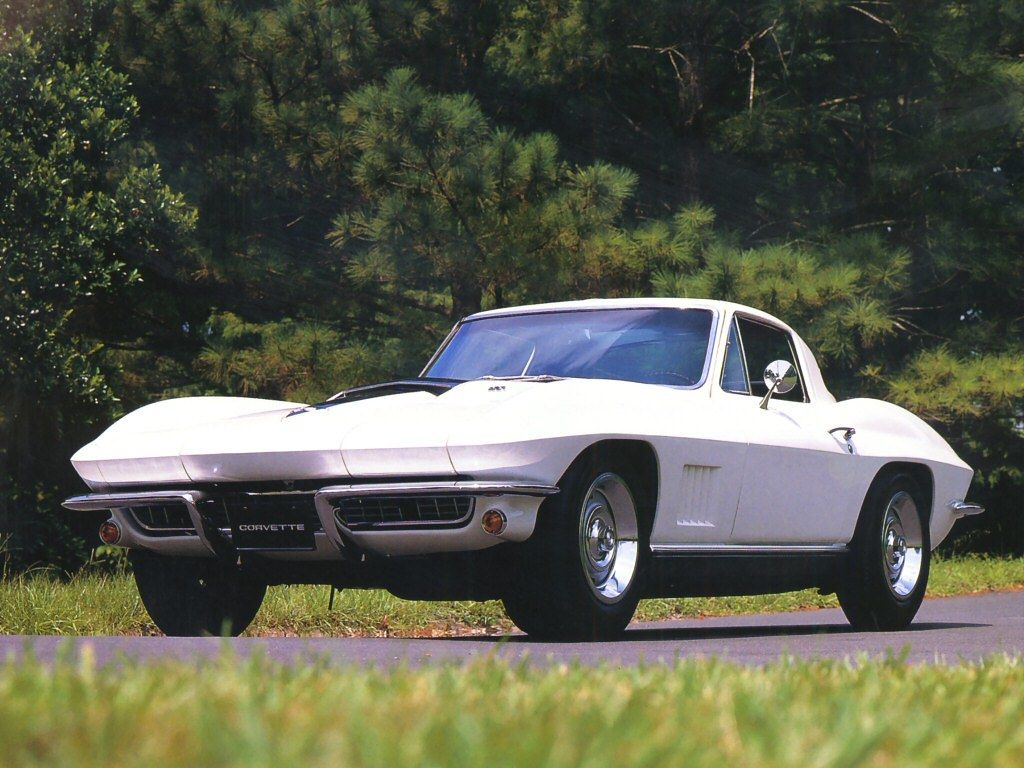
11. **1967 Chevrolet Corvette L88**Hold onto your hats, because we’re diving into the absolute, ultimate expression of Corvette performance from the swinging ’60s: the 1967 Chevrolet Corvette L88. This wasn’t just a powerful option; this was Chevrolet subtly offering a fully-fledged race car to the public, albeit with a wink and a nod. With only 20 built in ’67, it’s a rarity that makes other rare cars look common.
Chevrolet, in a masterstroke of reverse psychology, actually understated the horsepower figures for the L88. Why? To discourage regular customers from buying what was essentially a race car with license plates! This raw, uncompromised machine was designed for the track, with heavy-duty components and an engine that breathed fire. It was for the serious enthusiast, the daring driver who wanted pure, unadulterated speed.
These birds of prey are now legends, and their incredible scarcity combined with their legendary performance means they command prices well over $3 million at auction. Owning an L88 is like owning a piece of forbidden fruit, a secret weapon unleashed on the unsuspecting public. It’s a magnificent testament to a time when engineering pushed the boundaries, even if the marketing department tried to keep it under wraps!
Car Model Information: 2004 Chevrolet Corvette Base
Name: Chevrolet Corvette
Caption: 2021 Chevrolet Corvette C8
Manufacturer: Chevrolet
Production: 1953–present
ModelYears: bulleted list
Assembly: bulleted list
Class: Sports car
BodyStyle: coupé
Layout: Front-engine, rear-wheel-drive layout,Rear mid-engine, rear-wheel-drive layout
Categories: 1950s cars, 1960s cars, 1970s cars, 1980s cars, 1990s cars
Summary: The Chevrolet Corvette is a line of American two-door, two-seater sports cars manufactured and marketed by General Motors under the Chevrolet marque since 1953. Throughout eight generations, indicated sequentially as C1 to C8, the Corvette is noted for its performance, distinctive styling, lightweight fiberglass or composite bodywork, and competitive pricing. The Corvette has had domestic mass-produced two-seater competitors fielded by American Motors, Ford, and Chrysler; it is the only one continuously produced by a United States auto manufacturer. It serves as Chevrolet’s halo car.
In 1953, GM executives accepted a suggestion by Myron Scott, then the assistant director of the Public Relations department, to name the company’s new sports car after the corvette, a small, maneuverable warship. Initially, a relatively modest, lightweight 6‑cylinder convertible, subsequent introductions of V8 engines, competitive chassis innovations, and rear mid-engined layout have gradually moved the Corvette upmarket into the supercar class. In 1963, the second generation was introduced in coupe and convertible styles. The first three Corvette generations (1953–1982) employed body-on-frame construction, and since the C4 generation, introduced in 1983 as an early 1984 model, Corvettes have used GM’s unibody Y‑body platform. All Corvettes used front mid-engine configuration for seven generations, through 2019, and transitioned to a rear mid-engined layout with the C8 generation.
Initially manufactured in Flint, Michigan, and St. Louis, Missouri, the Corvette has been produced in Bowling Green, Kentucky, since 1981, which is also the location of the National Corvette Museum. The Corvette has become widely known as “America’s Sports Car.” Automotive News wrote that after being featured in the early 1960s television show Route 66, “the Corvette became synonymous with freedom and adventure,” ultimately becoming both “the most successful concept car in history and the most popular sports car in history.”
Get more information about: Chevrolet Corvette
Buying a high-performing used car >>>
Brand: Chevrolet Model: Corvette
Price: $22,993 Mileage: 29,579 mi.
Read more about: Cruising Through Time: The 12 Dream Machines of the 1960s and 1970s That Defined Automotive Greatness

12. **1962 Ferrari 250 GT California Spider**From track-focused ferocity, we glide into the epitome of automotive glamour: the 1962 Ferrari 250 GT California Spider. Before it achieved legendary status by famously (and somewhat infamously) starring in “Ferris Bueller’s Day Off,” this magnificent convertible was already a titan of the automotive world. It perfectly encapsulates that laid-back, luxurious, yet undeniably potent California style.
This isn’t just a car; it’s an Italian dream rendered in steel and leather. It flawlessly combines Ferrari’s unparalleled racing pedigree with the undeniable allure of open-top driving. Pininfarina’s exquisite design ensured that every curve and line was a masterpiece, creating a silhouette that is both timelessly elegant and subtly aggressive. It’s the kind of car that makes you want to cruise down the Pacific Coast Highway with the sun on your face and the roar of that glorious V12 behind you.
Today, these gorgeous convertibles are not merely valuable; they are art on wheels, consistently selling for over $18 million. It’s the perfect combination of Ferrari’s storied racing heritage and that effortlessly cool, golden-era California vibe. If you can afford it, this is the ultimate statement piece, a rolling sculpture that delivers an unmatched driving experience.
Car Model Information: 2024 Honda Civic LX
Name: Ferrari 250 GT , California Spyder
Caption: Ferrari 250 GT California Spyder SWB at the Goodwood Revival 2009.
Manufacturer: Ferrari
Production: 1957–1963,(106 produced)
Assembly: Modena
Designer: Sergio Scaglietti
Class: Sports car
BodyStyle: Roadster (automobile)
Layout: Longitudinal engine,Front-engine, rear-wheel-drive layout#Front mid-engine, rear-wheel-drive layout
Engine: Ferrari Colombo engine
Related: Ferrari 250 GT Berlinetta
Transmission: Manual transmission
Wheelbase: 2600 mm
Abbr: on (dry)
Weight: 1100 kg
Successor: Ferrari Daytona
Categories: 1950s cars, 1960s cars, Articles with short description, CS1 maint: others, Cars introduced in 1957
Summary: The Ferrari 250 GT California Spyder is a sports car developed by the Italian automotive company Ferrari. It is presented by the brand as Ferrari 250 Gran Turismo Spyder California or simply Ferrari 250 California. It was designed by Sergio Scaglietti, who adapted the styling of the 250 GT Pinin Farina, and was produced by Carrozzeria Scaglietti. The model gained considerable recognition after its appearance in the 1986 film Ferris Bueller’s Day Off.
The 250 GT California Spyder is a convertible version of the contemporary Berlinetta. It is powered by the traditional Ferrari V12 engine and was produced in approximately 100 units, nearly equally split between long wheel-bases (LWB) versions from 1957 to 1960 and short wheelbase (SWB) versions from 1960 to 1963.
At auction French actor Alain Delon sold for nearly EUR 16.3 million in February 2015 Christies sold a rare variant for USD 25 million at 2025 Monterey Car Week.
Get more information about: Ferrari 250 GT California Spyder
Buying a high-performing used car >>>
Brand: Ferrari Model: 250 GT California Spider
Price: $21,650 Mileage: 17,979 mi.
Read more about: Unveiling the Titans of the Auction Block: A Deep Dive into the World’s Most Expensive Cars and What Makes Them Priceless

13. **1963 Mercedes-Benz 300SL Roadster**Let’s pivot to a different kind of perfection, one honed with Teutonic precision and a relentless pursuit of excellence: the 1963 Mercedes-Benz 300SL Roadster. This wasn’t just any car; it was the swansong of the legendary 300SL line, representing the absolute pinnacle of German engineering and luxury from its era. It’s a car that, even today, makes you marvel at its advanced design.
With its groundbreaking fuel-injected engine and incredible build quality, the 300SL Roadster was, quite frankly, decades ahead of its time. It combined breathtaking performance with an undeniable sense of prestige and comfort, making it the ultimate grand tourer for the discerning motorist. Every detail, from the supple leather interior to the perfectly weighted controls, speaks of an era when craftsmanship was paramount.
Pristine examples of this automotive icon now sell for well over $2 million, and it’s easy to see why. Its timeless design, coupled with that revolutionary engineering, ensures its place as one of the most sought-after classics. It’s a testament to the fact that true innovation, wrapped in such elegant lines, will always endure and continue to capture the hearts of enthusiasts worldwide.
Car Model Information: 2023 Kia Telluride SX
Name: Mercedes-Benz 300 SL
Caption: 300 SL roadster and gullwinged coupé
Manufacturer: Mercedes-Benz
Production: Mercedes-Benz 300 SLR#Uhlenhaut Coupé
Assembly: Stuttgart
Designer: Friedrich Geiger
Class: Sports car,Grand tourer
BodyStyle: coupé,Roadster (automobile)
Platform: Coupé W198 I, Roadster W198 II
Related: Mercedes-Benz 190 SL
Layout: FR layout
Engine: 2996 cc
Abbr: off
Transmission: Manual transmission
Wheelbase: 2400 mm
Length: 4520 mm
Width: 1790 mm
Height: 1300 mm
Weight: 1500 kg
Predecessor: Mercedes-Benz W194
Successor: Mercedes-Benz W113
Doors: Gull-wing door
Categories: 1960s cars, 24 Hours of Le Mans race cars, All Wikipedia articles needing clarification, All Wikipedia articles written in American English, All articles with vague or ambiguous time
Summary: The Mercedes-Benz 300 SL (chassis code W 198) is a two-seat sports car that was produced by Mercedes-Benz from 1954 to 1957 as a gullwinged coupé and from 1957 to 1963 as a roadster. The 300 SL traces its origins to the company’s 1952 racing car, the W194, and was equipped with a mechanical direct fuel-injection system that significantly increased the power output of its three-liter overhead camshaft straight-six engine.
The 300 SL was capable of reaching speeds of up to 260 km/h (162 mph), earning it a reputation as a sports car racing champion and making it the fastest production car of its time. The car’s iconic gullwing doors and innovative lightweight tubular-frame construction contributed to its status as a groundbreaking and highly influential automobile.
The designation “SL” is an abbreviation of the German term super-leicht, meaning “super-light”, a reference to the car’s racing-bred lightweight construction. The 300 SL was introduced to the American market at the suggestion of Max Hoffman, Mercedes-Benz’s United States importer at the time, who recognized the potential demand for a high-performance sports car among American buyers. The Mercedes-Benz 300 SL remains a highly sought-after classic car and is celebrated for its performance, design, and technological advancements.
Get more information about: Mercedes-Benz 300 SL
Buying a high-performing used car >>>
Brand: Mercedes-Benz Model: 300SL Roadster
Price: $36,155 Mileage: 28,718 mi.
Read more about: Driving Legends: The 12 Most Successful Mercedes-Benz Models Shaping Automotive History

14. **1968 Dodge Charger R/T Hemi**And finally, for our grand finale, let’s unleash another dose of pure, unapologetic American muscle: the 1968 Dodge Charger R/T Hemi. This car isn’t just famous; it’s a bona fide pop culture icon, seared into our collective consciousness by its starring roles in “Bullitt” and later, “The Dukes of Hazzard.” It’s the ultimate street warrior, a machine that commanded respect from every angle.
Underneath that menacing, instantly recognizable ‘Coke bottle’ styling was the legendary 426 Hemi engine – a name that still sends shivers down the spine of any gearhead. This engine wasn’t just powerful; it was ferocious, delivering raw, brutal force that could humble almost anything else on the road. The aggressive stance and the sheer presence of a Hemi Charger are simply unforgettable.
These iconic machines, with their perfect blend of menacing looks and raw power, can now command over $500,000 in top condition. The 1968 Charger R/T Hemi isn’t just a car; it’s a roaring symbol of an era when horsepower reigned supreme, and American manufacturers built cars with an audacious, swaggering confidence. It’s a legend, plain and simple.
Car Model Information: 2022 Dodge Charger R/T Scat Pack
Name: Dodge Charger
Caption: 1969 Dodge Charger
Manufacturer: Dodge
Production: 1966–1978,1981–1987,2005–present
ModelYears: 1966–1978,1982–1987,2006–present
Categories: 1960s cars, 1970s cars, 1980s cars, 2000s cars, 2010s cars
Summary: The Dodge Charger is a model of automobile marketed by Dodge in various forms over eight generations since 1966.
The first Charger was a show car in 1964. A 1965 Charger II concept car resembled the 1966 production version.
In the United States, the Charger nameplate has been used on mid-size cars, personal luxury coupes, subcompact hatchbacks, and full-size sedans.
Get more information about: Dodge Charger
Buying a high-performing used car >>>
Brand: Dodge Model: Charger
Price: $55,742 Mileage: 33,302 mi.
Read more about: Roaring Legends: A Deep Dive into 15 Peak-Performance 1970s Muscle Cars for the Enthusiast
And there you have it, folks! What an incredible journey we’ve taken through the automotive landscape of the 1960s. From the rarest of Italian thoroughbreds to the mightiest of American muscle, each of these machines represents not just a mode of transport, but a profound piece of history, art, and engineering. The 1960s truly was a golden age, a decade where designers and engineers dared to dream big, pushing boundaries and creating cars that still captivate and inspire us today. These masterpieces, with their raw power, luxurious appointments, and undeniable cultural impact, didn’t just cement their place in automotive history; they carved it out with a roar, a sleek line, and an unforgettable driving experience. They are more than metal and rubber; they are legends.



